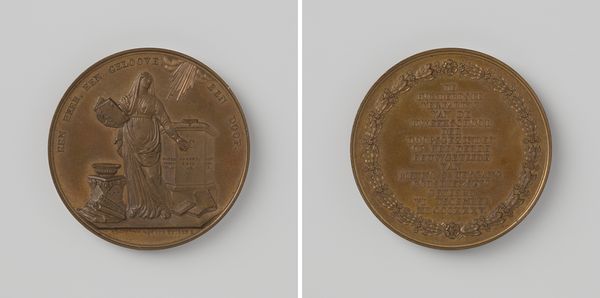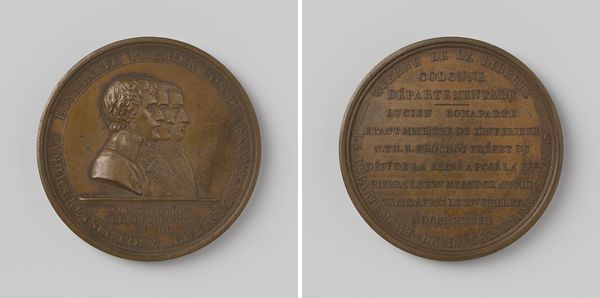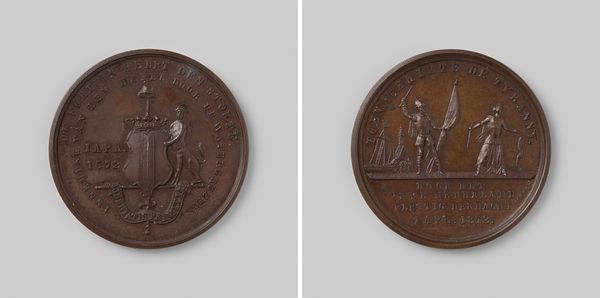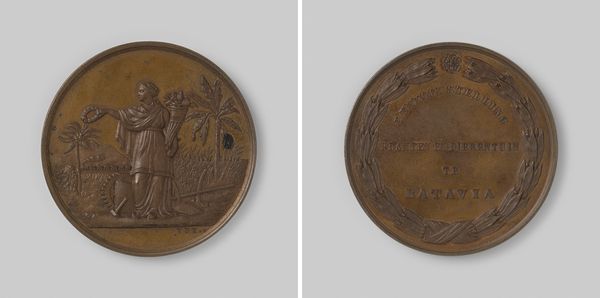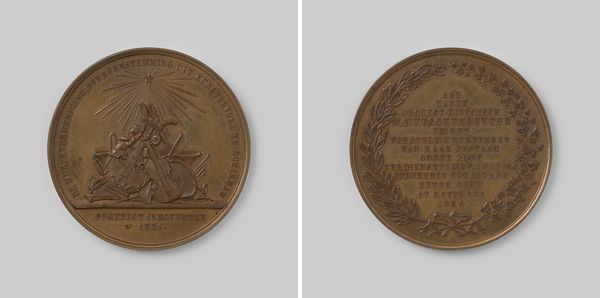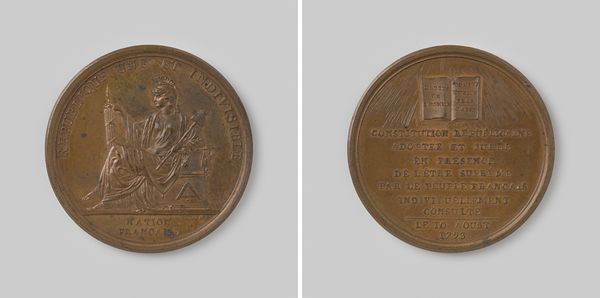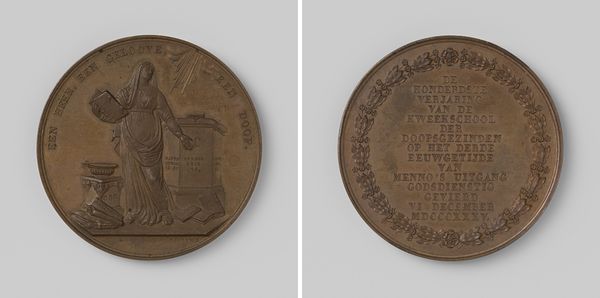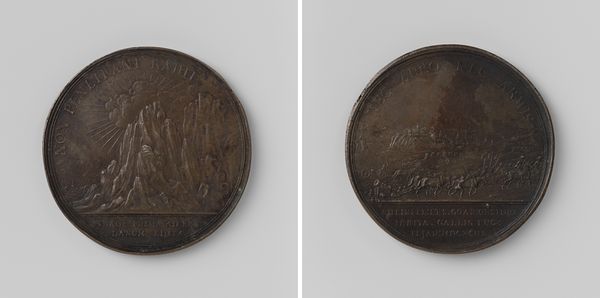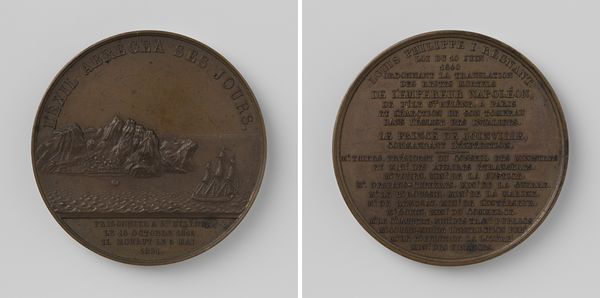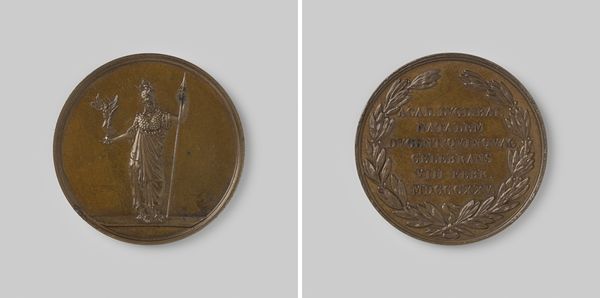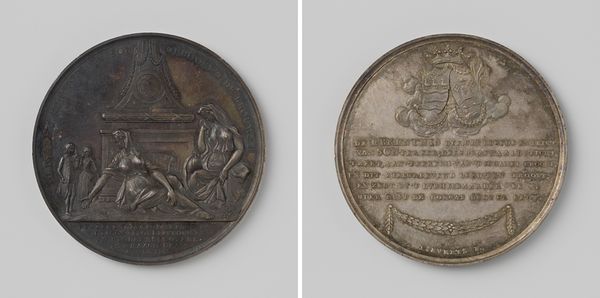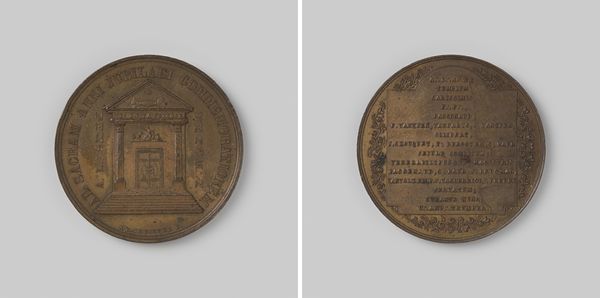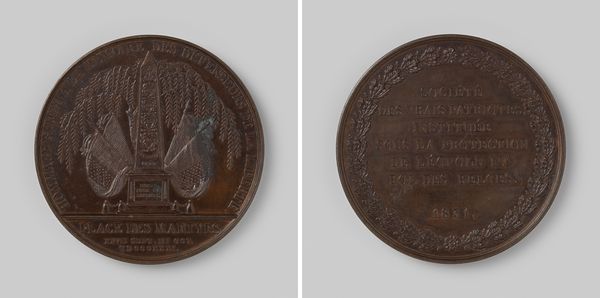
Vervaardiging van de "Catalogue ou Description de la collection de medailles de J.J. Becker Bz.", penning in goud uitgereikt aan I.P. Six, H.C. Milies, O. Keer en C.I.S. Tetterode 1854
0:00
0:00
metal, bronze, sculpture
#
portrait
#
neoclacissism
#
metal
#
sculpture
#
bronze
#
sculpture
Dimensions: diameter 4.1 cm, weight 35.85 gr
Copyright: Rijks Museum: Open Domain
Editor: This bronze medal, "Vervaardiging van de 'Catalogue ou Description de la collection de medailles de J.J. Becker Bz.,'" created in 1854 by David van der Kellen, features a woman seated at a table covered with objects. It looks like an allegory. How do you interpret this work? Curator: It's tempting to view this piece through the lens of 19th-century societal structures. Who was this woman? And more importantly, who wasn’t she? Consider the engraver's decision to personify knowledge or industry with a female figure. Was this honoring women’s intellectual contributions, or did it inadvertently reinforce the exclusion of actual women from these roles by turning their capacity into allegory? How does its neoclassical style play into ideals of femininity? Editor: That’s a great point. So, instead of just admiring the classical references, we should question what's missing or reinforced by those choices. Curator: Exactly. Medals like this were often commissioned to commemorate events or honor individuals. Exploring the power dynamics inherent in commemorating one event, and not others, could lead us to uncover marginalized voices in the social narrative, while reflecting the prevalent imperial and gendered rhetoric in Dutch society. Editor: Looking at it now, it's a tool solidifying social narratives of that time. Does the laurel wreath reinforce these social class hierarchies as well? Curator: Precisely! The wreath might represent victory, but who exactly is being celebrated and whose labor made this celebration possible? Can this medal offer an opportunity for intersectional approaches that address gender, class, and labor histories? Editor: I didn’t see all of this the first time around. Thanks for guiding me! I’m left questioning many assumptions I have, which is really powerful. Curator: Exactly! Questioning such imagery empowers you to see how art operates within a much bigger picture of society and helps us to uncover power imbalances!
Comments
No comments
Be the first to comment and join the conversation on the ultimate creative platform.
